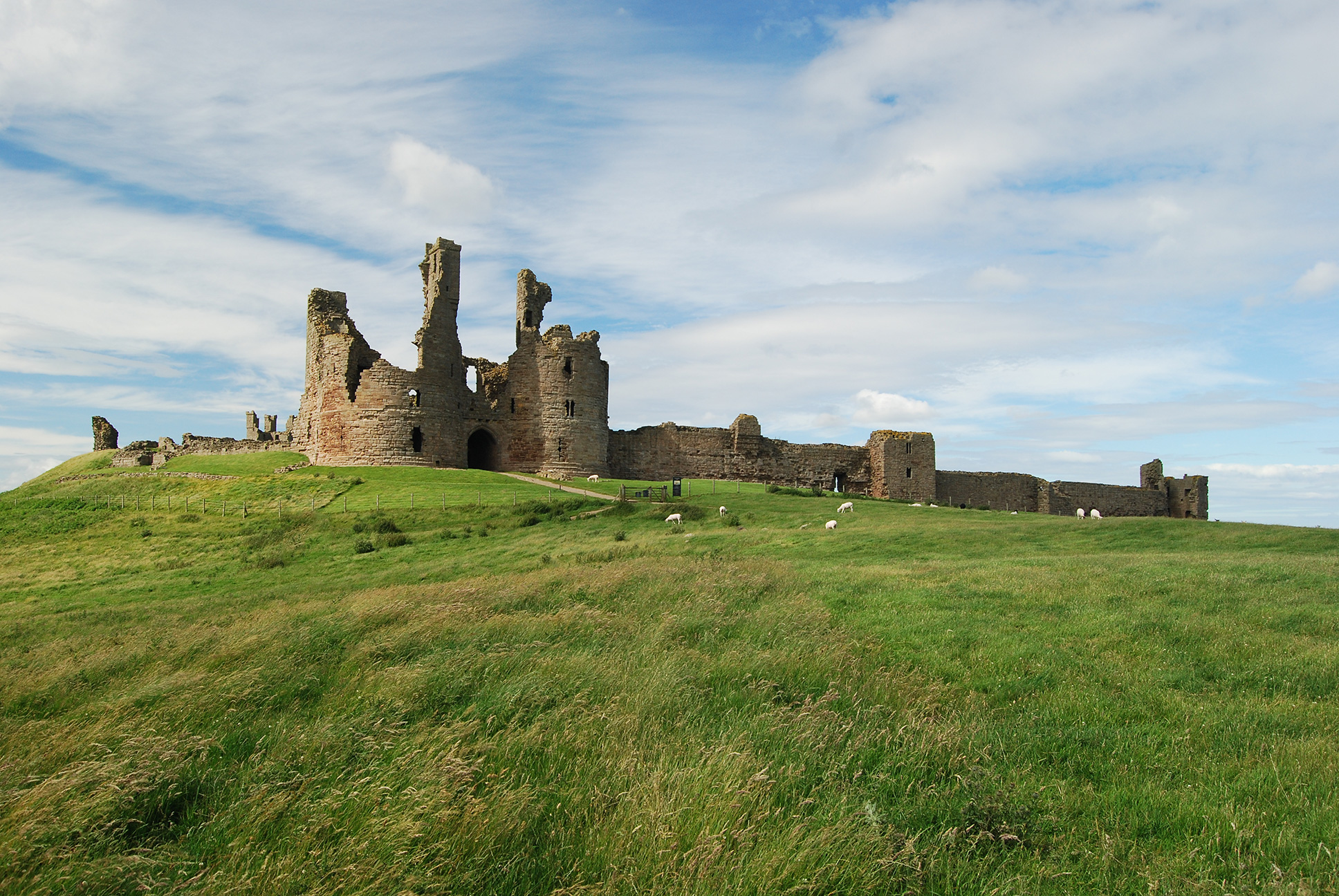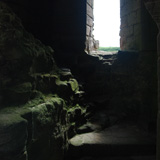History
Along the sea-battered Northumberland coast of England resides Dunstanburgh Castle. It was built by Thomas, the 2nd Earl of Lancaster, in 1313. Several decades later, in the 1380s, John of Gaunt inherited the castle, added a second gatehouse to the fortress, and converted the massive gatehouse built by Thomas of Lancaster into a keep. However, his enhancements were performed hastily using a poor-quality stone. Consequently, they did not withstand the test of time, as this portion of the structure fell into ruins much faster than the original construction.

Prior to Lancaster's arrival, the lands were controlled by Simon de Montfort in the middle of the 13th century, whose primary residence was Kenilworth Castle in Warwickshire. After de Montfort was killed at the Battle of Evesham in 1265, Henry III gave the lands to Edmund, Lord of Embleton, younger brother of Edward I, and father of Thomas. After Edmund's death, the lands passed to Thomas, Earl of Lancaster. In 1307, Edward II, a cousin of Thomas, took the throne to become King of England. However, his devotion and favoritism towards the deplorable Piers Gaveston did not sit well with the Northern barons, who Thomas of Lancaster eventually led in the murder of Gaveston in 1312. Now at odds with King Edward II, Thomas of Lancaster built Dunstanburgh Castle to protect himself. After months of tension, the king issued Thomas of Lancaster a formal pardon in October 1313. However, construction of the castle was well underway by that time. On August 28th, 1315, King Edward II granted a formal license to crenelate Dunstansburgh Castle, which was nearing completion. Nonetheless, it represented the king's approval and acknowledgment of the castle's lawfulness.
Thomas was captured trying to flee to Dunstanburgh Castle after the Battle of Boroughbridge and was executed. The castle became the crown's possession before passing to the Dutchy of Lancaster.
Interestingly, English castles were typically built to defend a border or location along a critical travel route. Dunstanburgh's remote location along the coast was not considered a necessary location worth defending by the barons who controlled the territory before the arrival of Lancaster. Instead, the castle was constructed due to political uncertainties and increased Scottish raids from the north.
For the most part, Dunstanburgh Castle was a refuge during Scottish raids and barons traveling along the Northumberland coast. While predominantly uneventful, the castle was a location of action during the Wars of the Roses when Yorkists battered it with cannon fire causing severe damage, from which it never fully recovered. As the Scottish border became more stable, James I sold the castle to private ownership in 1604.
By the 1920s, the castle's owner, Sir Arthur Sutherland, could no longer afford to maintain it, and he placed it under the state's guardianship in 1930. When World War II broke out in 1939, the castle was used as an observation post and was refortified with trenches, pill boxes, and barbed wire. Today, Dunstanburgh Castle is owned by the National Trust and administered by English Heritage.
Castle Highlights
Dunstanburgh Castle is located on a remote outcrop along the North Sea. The castle was once one of the largest castles in Northern England. Even today, in ruins, its massive gatehouse and castle backed towards the sea would make any attacker think twice.
A long walk from the car park in the south or across the golf course to the north will be necessary for visitors to the castle. The view of the castle as you approach from either direction is well worth the walk. With its twin towers, the gatehouse remains the most intact portion of the castle and the best place to explore. Although a ruin now, ample remains of the gatehouse still exist to illustrate how large the towers were centuries ago. In addition, remnants of staircases and multiple floors within the towers still exist. If you believe the ghost story about Dunstanburgh, a secret hidden room exists somewhere close to or inside the gatehouse, just waiting to be rediscovered.
Almost as interesting as the gatehouse is the Lilburn Tower, located along the northern wall of the castle. Most towers of the period were built with circular-shaped exterior walls to help deflect arrows or large projectiles fired from trebuchets and minimize structural damage. However, the Lilburn Tower was constructed with rectangular walls, possibly due to its location perched high above the surrounding fields, where it would not need the extra defense afforded by rounded walls. Either way, the primary purpose of the Lilburn Tower was to serve as an observation post for persons approaching from the north either by land or sea. Lastly, Dunstanburgh Castle also has a very large inner bailey which may have been used for farming or grazing livestock within its walls when protection was needed.
Dunstanburgh Castle is also haunted.



